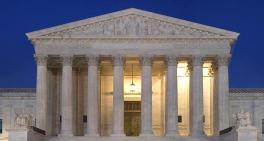U.S. Bankruptcy Courts VI
United States Courts
All bankruptcy cases are handled in federal courts under rules outlined in the U.S. Bankruptcy Code.
There are different types of bankruptcies, which are usually referred to by their chapter in the U.S. Bankruptcy Code.
Individuals may file Chapter 7 or Chapter 13 bankruptcy, depending on the specifics of their situation.
Municipalities—cities, towns, villages, taxing districts, municipal utilities, and school districts may file under Chapter 9 to reorganize.
Businesses may file bankruptcy under Chapter 7 to liquidate or Chapter 11 to reorganize.
Chapter 12 provides debt relief to family farmers and fishermen.
Bankruptcy filings that involve parties from more than one country are filed under Chapter 15.
Puerto Rico - ECF
Rhode Island - ECF
South Carolina - ECF
South Dakota - ECF
Tennessee Eastern - ECF
Tennessee Middle - ECF
Tennessee Western - ECF
Texas Eastern - ECF
Texas Northern - ECF
Texas Southern - ECF
Texas Western - ECF
Utah - ECF
Vermont - ECF
Virgin Islands - ECF
Virginia Eastern - ECF
Virginia Western - ECF
Washington Eastern - ECF
Washington Western - ECF
West Virginia Northern - ECF
West Virginia Southern - ECF
Wisconsin Eastern - ECF
Wisconsin Western - ECF
Wyoming - ECF
Related listings
-
U.S. Courts of Appeals
United States Courts 07/30/2017There are 13 appellate courts that sit below the U.S. Supreme Court, and they are called the U.S. Courts of Appeals. The 94 federal judicial districts are organized into 12 regional circuits, each of which has a court of appeals. The appellate ...
-
U.S. Supreme Court
United States Courts 07/30/2017U.S. Supreme Court The Supreme Court is the final judge in all cases involving laws of Congress, and the highest law of all — the Constitution. The Supreme Court, however, is far from all-powerful. Its power is limited by the other two branches...
-
National Courts
United States Courts 06/30/2017Judicial Panel On Multidistrict Litigati - ECF U.S. Court Of Federal Claims - ECF U.S. Court Of International Trade - ECF

Nicholas C. Minshew - Minshew & Ahluwalia LLP
Nicholas C. Minshew, Attorney at Law, concentrates his practice in the area of Family Law including divorce, separation, child support, child custody, alimony, division of property, separation agreements, domestic violence, prenuptial agreements, and child support enforcement & modification. Mr. Minshew provides legal services to clients in Washington, D.C., and throughout Maryland, including Montgomery County, Frederick County, and Prince George’s County. Mr. Minshew obtained his Juris Doctorate degree from the American University, Washington College of Law in 2000, where he worked as an editor for the Administrative Law Review. After receiving his law degree, Mr. Minshew worked as an attorney for the global law firm of Morgan, Lewis & Bockius LLP, and for Leonard Street & Deinard LLP representing companies in Federal proceedings. During that time, Mr. Minshew redirected his focus to provide legal services directly to individuals and families.




